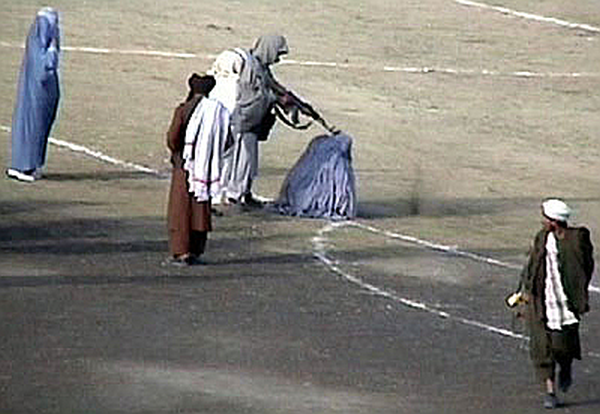Afghanistan – has Biden taken a wrong turn?

by Neville Teller
On April 14, 2021 President Joe Biden announced that he was abandoning the timetable for withdrawing US troops from Afghanistan that his predecessor, Donald Trump, had agreed with the Taliban. He had decided that the process of withdrawal would continue, but at a slower pace. The new deadline for its completion would be September 11, 2021 – the 20th anniversary of al-Qaeda’s 9/11 attack on the United States.
The Taliban were unimpressed with Biden’s symbolic gesture. They marked their objection to his unilateral abandonment of the earlier agreement with a surge in violence and a car bomb in Logar Province which killed nearly 30 people. Then on May 3 at least seven Afghan military personnel were killed when the Taliban set off explosives smuggled through a tunnel that the group had dug into an army outpost in southwestern Farah province. On May 6 they captured the vast Dahla Dam in Arghandab. The Afghan defense ministry says security forces have been responding to attacks by the Taliban in at least six other provinces,
Experts say that the Taliban, despite losses estimated in the tens of thousands, is stronger now than at any point since 2001. With up to 85,000 full-time fighters, it controls twenty percent of the country. It is this continuing power of the Taliban that is behind objections in Washington to Biden’s policy. Former US Secretary of State Hillary Clinton has warned of “huge consequences” of Biden’s decision to withdraw American troops. Her fear is that the Taliban could take over control of Afghanistan, resulting in a new civil war.
She is not alone. Many foreign policy experts in Washington, both Democrat and Republican, feel that the US should continue to deploy its military – among them Condoleezza Rice, secretary of state under President George W Bush. She too has warned about the risks of withdrawing troops and the consequent threat of terrorism.
A possible expansion of terrorist activity also concerns retired General David Petraeus, who commanded US forces in Afghanistan and later ran the CIA. Petraeus worries the Taliban will continue to gain ground militarily and allow terrorist groups to operate, while the US and NATO will have lost the platform that Afghanistan provides for counter-terrorism campaigns.
“I’m really afraid,” he said, “that we’re going to look back two years from now and regret the decision.”
According to BBC reporters the Taliban see themselves as a government-in-waiting. They have a sophisticated “shadow” structure, with officials in charge of overseeing everyday services in the areas they control. They refer to themselves as the “Islamic Emirate of Afghanistan.”
There is no escaping the truth, painful though it may be. The Taliban – the hardline Islamist organization swiftly identified by US intelligence in the wake of the 9/11 attack as linked to al-Qaeda and shielding its leader, Osama bin Lada – has emerged unvanquished, if not unscathed, from its twenty-year struggle with America and its allies. The group has withstood counter-insurgency operations from three US administrations backed by NATO in a war that has killed more than 6,000 US troops and contractors, over 1,100 NATO soldiers, and an estimated 73,000 Afghan fighters and police officers.
Back in 2001 it took Washington less than a week to determine the source of the deadly terrorist attack it had sustained, and on September 18, 2001 then President George W Bush signed legislation authorizing the use of US forces against the perpetrators. The US launched military operations in Afghanistan on October 7 by way of a series of air strikes against Taliban military sites and terrorist training grounds.
Intensive and sustained efforts by the US, boosted in December 2009 by then President Barack Obama increasing US troop numbers to 100,000, may have weakened, but it failed to deter, the Taliban’s sustained resistance. Their demand was for the withdrawal of all foreign troops. On June 22, 2011 Obama, maintaining “We are starting this drawdown from a position of strength,” announced that 10,000 US troops would be withdrawn by the end of 2011 and an additional 23,000 by the summer of 2012.
From the moment US President Donald Trump took office in 2017, he pledged to put an end to the conflict and achieve Obama’s aim of bringing the American forces back home. It took two years of secret back-channel negotiations before peace talks began on February 25, 2019. Abdul Ghani Barada, the co-founder of the Taliban, was at the table.
This extraordinary arrangement between the world’s leading power and a hardline extremist Islamist movement was greeted with optimism by President Trump. “I really believe the Taliban wants to do something to show we’re not all wasting time,” he said.
The talks appeared successful. Agreement was quickly reached on a draft peace deal involving the withdrawal of US and international troops from Afghanistan, matched by an undertaking by the Taliban to prohibit other jihadist groups operating within the country.
However the agreement was far from watertight, and months of wrangling followed. President Joe Biden took office with many details still unresolved – among them evidence that the Taliban was prepared to break its ongoing ties with al-Qaeda, and that it was actually prepared to enter a political arrangement with the Afghan government led by President Ashraf Ghani.
Who are the Taliban?
The group emerged following a 10-year occupation of the country by the Soviet Union. The USSR had invaded in 1979 in an attempt to keep Afghanistan within its sphere of influence, but a decade of guerilla warfare conducted by Sunni extremists eventually led to Soviet troops withdrawing in February 1989.
A year or so later a new hardline Sunni Islamist group calling itself Taliban (“students” in the Pashto language), began to emerge. They swiftly became a formidable military machine, and towards the end of 1996 they captured the Afghan capital, Kabul. By 1998, the Taliban were in control of almost 90 percent of Afghanistan.
Initial support from some of the population quicky faded as the Taliban imposed hardline Islamist practices, such as amputations for those found guilty of theft, and public executions of adulterers. Television, music and cinema were banned, and girls aged 10 and over were forbidden to attend school. Meanwhile, they continued to wage their two-handed war – against the US presence in the country on the one hand, and the Afghan government on the other. That war persists.
The Taliban are a ruthless extremist terrorist organization hell-bent on securing control of Afghanistan. To achieve their objective they have consistently demanded the evacuation of all foreign troops. Biden is kindly obliging. No wonder experienced voices in Washington and beyond are raising objections.

Neville Teller is Middle East correspondent for Eurasia Review. His latest book is: “Trump and the Holy Land: 2016-2020”. He blogs at www.a-mid-east-journal.blogspot.com.
He was made an MBE – The Most Excellent Order of the British Empire in 2006 “for services to broadcasting and to drama.”
Read more articles from Neville Teller
Read more about: Afghanistan, Joe Biden Presidency, US-Afghanistan



